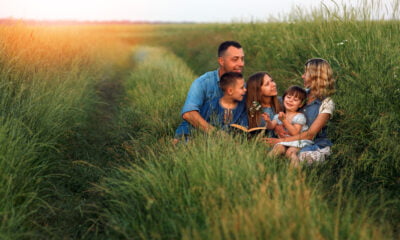Are you trying to get your financial life on track? Do you also want to live a more sustainable lifestyle? The two things don’t have to be inconsistent. However, you need to be smart about it.
Many people want to make green living a central part of their lives. Unfortunately, that often comes at the expense of other priorities, because they don’t practice it sensibly.
One of the ways that green living can cause issues is that it can lead people to overspend in certain areas. This is not because green living can’t be done frugally, but rather that they don’t follow it properly.
You need to be smart about living green. You can find ways to cut your expenses if you do it right. This could be the key to helping you rebuild your credit.
One of the many downsides to bankruptcy, default, or even a poor payment history, is that it wreaks havoc on your credit score. Rehabilitating your credit while living a green lifestyle is hard, but not impossible. Identify where you need to start and follow these tips to get yourself back on track.
Just How Bad Is It?
If you don’t know what your current FICO score is, you should find out immediately. Most card companies offer a free credit score check to their members once a year. Sites like Credit Karma can give you a ballpark range. Any number below 579 is considered ‘bad’ and will require plenty of work. 580-669 is deemed to be ‘fair’, while anything above 670 is ‘good’.
Just remember — your score isn’t the only factor at play here. Your debt-to-income ratio and your employment status can also have an impact. If your credit is bad enough that you keep getting declined for a line of credit, you’ll need to start with a secured loan. These accounts are designed for people who are looking to re-establish their creditworthiness after a default.
Depending on how bad your credit score is, you might need to postpone certain green investments that take a lot longer to pay for themselves. One example is solar panels. These can cost tens of thousands of dollars and take an average of five to ten years to pay for themselves. If you are financing them with bad credit, you will take longer due to a higher interest rate for financing.
You should look for green investments that cost less at first. Worry about higher ticket green investments after your credit is fixed.
Only Use Electronic Methods to Fix Any Errors on Your Report (Save Trees and Lower Your Carbon Footprint)
Obtaining a copy of your credit report from the three major bureaus is easy. Experian, Equifax, and TransUnion are required to give everyone in the U.S. one free report per year. Examining each report for errors can help you dispute any mistakes that are lowering your score. Some services can help you file disputes electronically. If you notice a debt on your credit report that you’ve paid off, make sure you dispute the information right away.
The nice thing about this is that the process is greener these days. You can do it all online, which lowers your carbon footprint and saves trees!
Use Electronic Solutions to Make Payments On-Time
Aside from your score, your payment history has a massive impact on your creditworthiness. Making payments on time accounts for around 35% of a person’s score. Just be aware that on-time payments are the hardest record to fix if you have a history of late payments. It takes seven years for a late payment to fall off of your record. Bankruptcy will take ten years from the filing date to disappear. When you rebuild credit after defaulting, re-establishing creditworthiness is a long process but is worth it when you can come back out on top and take advantage of the best interest rates on the market.
You should make these payments online. This is both financial prudent and good for the environment, because you will leave a smaller carbon footprint and save paper.
Manage Each Type
Did you know there are two main types of credit? Installment accounts are loans like mortgages, car payments, or student loans. Revolving accounts are cards or a line of credit against your equity in your home. A good mix of installment and revolving accounts shows you are responsible with both types of debt. Don’t let your utilization on revolving accounts get too high, either. Your utilization should stay below 30% of your limit, even on secured accounts.
Utilization
Those with excellent scores typically maintain less than 10% of their usage. Paying on-time and regularly is an excellent way to get a limit increase. Just don’t let yourself fall into the trap of spending more when these happen. Keep your utilization below 30% to keep a healthy score. Don’t close any old accounts you have, since that could impact your utilization.
You Can Restore Your Credit and Help the Environment at the Same Time
You don’t have to sacrifice your credit score to help the environment. There are a lot of ways to rebuild it while also lowering your carbon footprint. You just have to be smart and eco-friendly about it.


 Environment10 months ago
Environment10 months agoAre Polymer Banknotes: an Eco-Friendly Trend or a Groundswell?

 Environment11 months ago
Environment11 months agoEco-Friendly Home Improvements: Top 7 Upgrades for 2025

 Features9 months ago
Features9 months agoEco-Friendly Cryptocurrencies: Sustainable Investment Choices

 Features10 months ago
Features10 months agoEco-Friendly Crypto Traders Must Find the Right Exchange
































